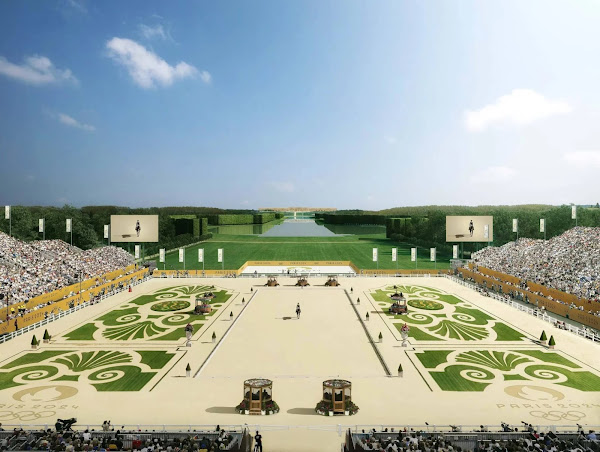Polo: Paris’ Cultural Muse
Paris has shared a timeless love affair with polo, a passion deeply woven into the city’s art and cultural heritage.
Polo, a sport that traces its origins to ancient Persia, found its way to European nobility in the 19th century, swiftly becoming a symbol of elegance and exclusivity. Its arrival in Paris marked a significant cultural shift, as the French aristocracy embraced the sport, weaving its regal charm into their social and artistic lives. Parisian fascination with polo is evident in the city’s historical landmarks and grand social events that celebrate the sport. Over time, polo has become an integral part of Parisian culture, influencing fashion, art, and high society. From stunning tournaments held in medieval châteaux to refined art exhibitions inspired by polo, the sport continues to resonate with Paris’s rich cultural heritage and enduring elegance.
Cultural impact
To grasp polo’s cultural significance in Paris, it is essential to understand its storied past. Known as the “sport of kings,” polo originated in ancient Persia before becoming a global symbol of aristocratic prestige. When it reached Paris, the city’s flair for the dramatic and unique transformed the sport into a celebration of refinement and creative expression. Paris reimagined polo through its distinct cultural lens, infusing it with elegance, sophistication, and artistic vibrancy. Today, polo in Paris is more than a sport—it’s a cultural phenomenon that blends tradition with modernity, embodying the city’s timeless charm and artistic spirit.
Polo’s influence on Parisian art and culture is subtle yet significant, reflected in art exhibits, fashion collections, and cultural events celebrating the sport’s elegance. A prime example is the annual Polo Art Fair in Paris, showcasing polo-inspired paintings, sculptures, and installations that capture its energy and grace.
A Symphony of Style
Polo’s influence on Parisian fashion is undeniable, with the city’s status as a global fashion capital seamlessly incorporating equestrian-inspired motifs. Designers like Dior and Chanel have drawn from the sport’s iconic uniforms and gear to create timeless and modern pieces.
Dior’s latest Haute Couture collection highlights sleek, equestrian-inspired tailoring, featuring fitted jackets with subtle polo themes, high-waisted pants, and elegant riding boots—blending rugged polo charm with Parisian sophistication. Similarly, Chanel’s collection includes polo-inspired accessories such as leather riding gloves and horse-bit brooches, embodying the sport’s spirit while maintaining Chanel’s signature blend of utility and luxury.
Art and Polo
The art world has embraced polo, with Parisian galleries showcasing its cultural relevance. The Musée d’Orsay’s Polo and the Arts exhibition features works by renowned painters, highlighting polo’s visual appeal and role in shaping cultural myths. Contemporary artists are also reinterpreting the sport through modern perspectives.
The Galerie des Champs-Élysées has hosted equestrian and polo-inspired art exhibits, capturing the sport’s grace, power, and elegance. Paintings often depict mid-game excitement or the serene moments before action, blending athleticism with refinement.
Parisian sculptors have also adopted polo as a motif, crafting dynamic bronze sculptures that embody the sport’s energy and elegance. These works, often seen in aristocratic homes, serve as artistic expressions and status symbols, reflecting polo’s deep connection to Parisian ideals of grace, skill, and excellence.
Polo Events as Cultural Highlights
Polo’s significance in Paris extends beyond the sport, encompassing lavish celebrations and a vibrant social scene. Polo tournaments in the city are as much about style and elegance as the game itself, often held at iconic venues where society’s elite gather to enjoy the spectacle.
At the heart of Paris’s polo culture is the Polo de Paris, nestled in the lush Bois de Boulogne. The club hosts prestigious events like the Open de Paris and the Polo Masters, attracting professional players and a sophisticated international audience. These tournaments are grand affairs, blending sport with fine dining, art, and fashion, creating a unique cultural experience.
The club’s expansive fields become a hub of luxury during matches, with spectators sipping champagne under elegant pavilions while the sound of galloping hooves sets a thrilling backdrop. VIP guests often enjoy exclusive after-parties in nearby châteaux, complete with gourmet feasts and live music, extending the festivities into the night. These events perfectly capture Paris’s ability to merge sport with high culture, making them as much about prestige as athleticism.
Private clubs like the Polo Club de Chantilly offer tailored experiences for discerning members, including private matches, world-class facilities, and expert training. Here, polo is more than a sport—it’s a lifestyle and a symbol of elegance and affluence.
As Paris thrives as a cultural hub, polo remains a symbol of refinement, influencing art, fashion, and high society. The sport seamlessly blends history with modernity, embodying the old-world charm of nobility and the vibrancy of contemporary culture. Whether through a Dior collection, an art masterpiece, or a grand tournament in the Bois de Boulogne, polo continues to inspire Paris’s luxury scene. It has become a cultural muse, synonymous with the elegance, creativity, and sophistication that define the City of Lights, leaving its legacy in every detail beyond the pitch.





Comments
Post a Comment